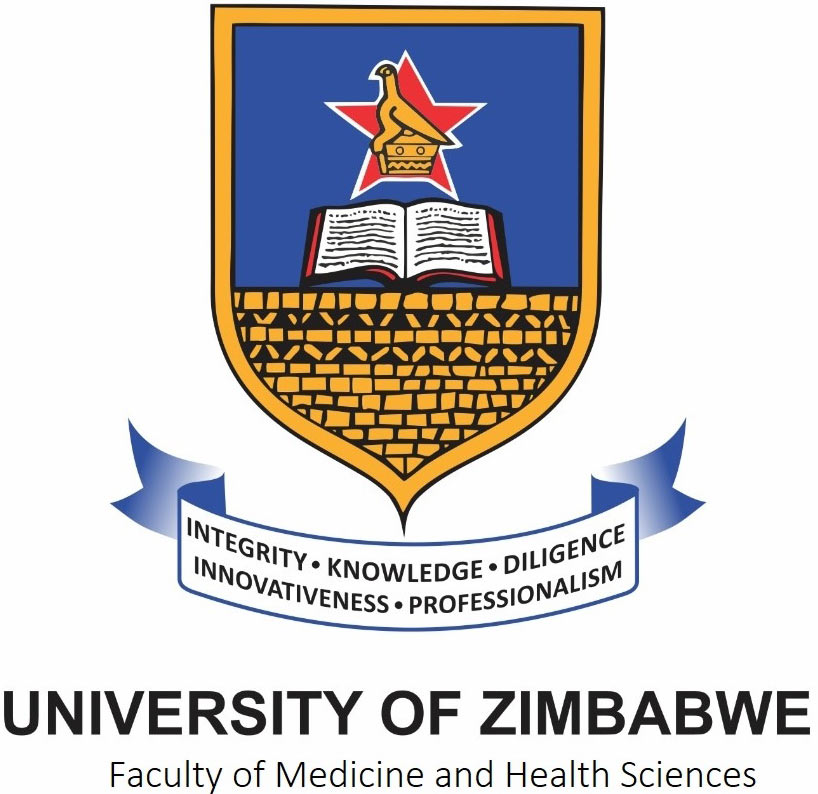Adolescent girls and young women can and will use HIV prevention products with consistency, according to interim results of a study of two different methods: daily use of the antiretroviral (ARV) tablet Truvada® as oral pre-exposure prophylaxis (PrEP) and the monthly dapivirine vaginal ring, a new HIV prevention product currently under regulatory review in several countries.
To provide protection against HIV, both must be used consistently- daily, for oral PrEP, and for the ring, a full month at a time – which previous studies of these products found to be especially challenging for younger women.
This was not the case in an ongoing study, known as REACH (Reversing the Epidemic in Africa with Choices in HIV prevention), being conducted at four clinical research sites in Uganda, South Africa and Zimbabwe by the National Institutes of Health-funded Microbicide Trials Network (MTN). The vast majority (97 percent) of the study’s 247 participants, who were between the ages of 16 and 21 when they enrolled, used the vaginal ring and daily oral PrEP some or all of the time. Fewer than three percent of participants used neither of the products, according to laboratory tests for adherence.
These and other results from the study’s first two periods, during which participants were asked to use each of the products for six months, are being reported at IAS 2021 – the 11th IAS Conference on HIV Science – taking place virtually from 18-21 July, and were featured in an official IAS press conference today.
Both approaches received high marks from the study’s participants: during the six months they were asked to use the monthly dapivirine ring, 88 percent said they liked it, and during the period when they were assigned to use oral PrEP, 64 percent said they liked the daily pill-taking regimen.
The research team attributes the study’s findings of high product adherence and acceptability to the ongoing support measures, tailored for this population, and nonjudgmental counseling approach provided as part of the study.
In many ways, these results exceeded even our own expectations, yet at the same time, it’s not surprising to find that these young women have the capacity and desire to protect themselves against HIV. They simply need to feel empowered and have the agency to make choices based on what they feel is right for them.”
Gonasagrie (Lulu) Nair, MBChB, MPH, REACH protocol chair and senior lecturer, Centre for Medical Ethics and Law, Faculty of Medicine, at Stellenbosch University in South Africa
Globally, more than half of all people living with HIV are women, and in sub-Saharan Africa, women account for more than 60 percent of adults with HIV. Rates of infection are especially high among adolescent girls and young women. According to UNAIDS, in 2020, one in four new infections in sub-Saharan Africa were in young women ages 15-24, despite making up only 10 percent of the population.
REACH, also known as MTN-034, was designed to fill important gaps in information about the safety and acceptability of the dapivirine ring and Truvada (a tablet containing a combination of the ARV drugs tenofovir disoproxil fumarate and emtricitabine) as oral PrEP in girls younger than 18. Of the 247 participants in REACH, 86 (35 percent) were age 16 or 17 at the time of enrollment. The study is also collecting important data that will supplement existing safety and acceptability data among young women ages 18-21.
Indeed, interim results also found both Truvada as oral PrEP and the dapivirine ring were well tolerated with no safety concerns. As REACH is still an ongoing study, the safety of these products continues to be monitored by the research team.
Information about the safety of the ring among adolescent girls is especially important. The ring, which was developed by the nonprofit International Partnership for Microbicides (IPM), would be the first biomedical prevention method designed specifically for women, and the first long-acting method. However, because the product’s Phase III trials were conducted among cisgender women ages 18-45, additional data would be needed to support the ring’s use in women younger than 18. Pending its final results, data from REACH, as well as from the MTN-023/IPM 030 study among adolescent girls ages 15 to 17 in the United States, will be submitted to regulators so that they may consider approving the ring for adolescent girls.
REACH also seeks to understand what adolescent girls and young women need to help them to use the dapivirine ring and oral PrEP as consistently as possible, and their preferences for either or both. After having experienced using both of the products, each for six months, participants then choose which one they want to use for the remaining six months of the study, or to choose neither. Moreover, participants are free to change their minds. The choice phase of REACH is still ongoing, with approximately 50 participants still in the study.
As researchers are reporting at IAS 2021, adherence to both products was high during the first two periods of the study. Adherence to oral PrEP was based on levels of drug in blood samples taken at each monthly visit. For the ring, researchers looked at the amount of residual drug left in rings participants returned after a month of use. The ring contains 25mg of the ARV dapivirine, about 4 mg of which is released into the vagina when used continuously for 28 days.
Using these measures, researchers determined that during the six months participants were assigned to use oral PrEP, 39.9 percent of the participants had drug levels that suggested they used oral PrEP at least some of the time, meaning they took the tablets between one and three times a week; and 58.6 percent were classified as high users, whose drug levels suggested they took the tablets at least four times a week, which among men who have sex with men has been associated with 100 percent protection. The threshold for protection in cisgender women has yet to be determined. For the ring, drug levels in returned rings suggested that 45.4 percent used it at least some of the time, and that 50.2 percent used the ring for the full month. Full compliance to oral PrEP, whereby blood levels indicate taking at least six pills per week, was evident for 22 percent of the participants.
“It’s important to note that our aim is not to make direct comparisons between oral PrEP and the ring, which wouldn’t be feasible anyway because the methods for measuring adherence are not the same. Rather, the study aims to compare participants’ adherence to the ring and oral PrEP in this study with what had been observed among young women in other trials of these products, as a way to understand whether these are feasible options for young women and whether they are willing to use either or both,” explained Dr. Nair. “The answer, as these results make clear, is yes.”
In the two Phase III trials of the ring, younger women used the ring least regularly, and as a group, had the lowest rates of risk reduction. In ASPIRE, for example, the ring was not shown to be effective among women ages 18-21, with levels of drug in returned rings also indicating low adherence to use. Likewise, daily pill taking was more challenging for younger women in the Phase III trials of oral PrEP (VOICE and FEM-PrEP). Moreover, results of the HPTN 082 open-label study among adolescent girls and young women in South Africa and Zimbabwe, found that 85 percent of the participants used oral PrEP with some regularity at the beginning of the study, but when clinic visits changed from monthly to every three months, there was a steep decline. Three months into the study, fewer than 25 percent were using oral PrEP, and by month 12, it was only nine percent.
“What strikes me most about REACH is that not only are we seeing high adherence, but persistence appears to be high as well. Clearly, the ongoing support and individual attention paid to participants seems to make a difference,” noted Connie Celum, M.D., M.P.H., professor of global health and medicine and director of the International Clinical Research Center at the University of Washington in Seattle, who is a REACH protocol co-chair and led the HPTN 082 study. “To see this kind of high adherence – it’s pretty remarkable, especially during this time of COVID-19.”
As part of REACH, study participants receive extensive support and counseling focused on helping them to use their assigned (or chosen) product as best they can. Every monthly visit includes a meeting with a counselor, and participants can also choose from a menu of additional forms of support, including daily text messages or weekly check-ins by phone; having a “Peer Buddy”; and adherence support groups. At some sessions, participants receive their individual adherence test results as a way to help facilitate discussion about adherence and how it relates to HIV risk reduction. Results are presented in terms of what they may mean for level of protection they are receiving and given without judgement.
“We’ve tried to empower these young women by letting them take control of their own health and behaviors and to make their own decisions. If participants don’t want to or cannot use either the ring or oral PrEP, we simply want to understand the reasons why, while also seeing what kind of support may help. And if they change their mind, that’s okay as well, because as their circumstances change, so will their needs and preferences for HIV prevention,” added Kenneth Ngure, Ph.D., MPH, chair of the department of community health at Jomo Kenyatta University of Agriculture & Technology in Nairobi, Kenya, and REACH protocol co-chair.
REACH began in February 2019 and is expected to be completed by October 2021, with final results, including outcomes from the choice period, anticipated in early-to-mid 2022.
While the study was originally designed to enroll 300 participants, 100 of whom would be 16- and 17-years old, in March 2020, in the face of the emerging COVID-19 pandemic, MTN and study leadership decided to close the study to further enrollment so that fullest attention could be paid to ensuring the safety of its current participants as well as clinic staff. By this time, REACH had already enrolled 247 participants, including 86 who were under the age of 18, such that the study would still be able to provide sufficient data about the safety of the dapivirine vaginal ring and oral PrEP in adolescent girls and young women, and to do so in less time as well.
Just four months later, in July 2020, the ring received a positive opinion from the European Medicines Agency (EMA) for its use among women ages 18 and older in developing countries, and soon after, was added to the World Health Organization’s (WHO) list of pre-qualified medicines. IPM is now seeking approval of the ring in eastern and southern Africa, including in countries where REACH is being conducted. Just yesterday, the ring received its first approval, which came from the Medicines Control Authority of Zimbabwe. IPM is also seeking regulatory approval from the US Food and Drug Administration.
In anticipation of the ring’s potential approval, WHO’s updated guidelines for HIV prevention, published in March 2021, recommend the ring as an additional HIV prevention choice for women at substantial risk of HIV, while also acknowledging that study’s like REACH will help to better understand ways to support consistent and persistent use of both PrEP and the ring in adolescent girls and young women.
The clinical research sites (CRSs) where REACH is being conducted are Makerere University-Johns Hopkins University CRS in Kampala, Uganda; the University of Zimbabwe College of Health Sciences Clinical Trials Research Centre Spilhaus CRS, Harare; and in South Africa, the Wits Reproductive Health and HIV Institute in Johannesburg and the Emavundleni CRS of the Desmond Tutu HIV Foundation in Cape Town.


No comments yet.